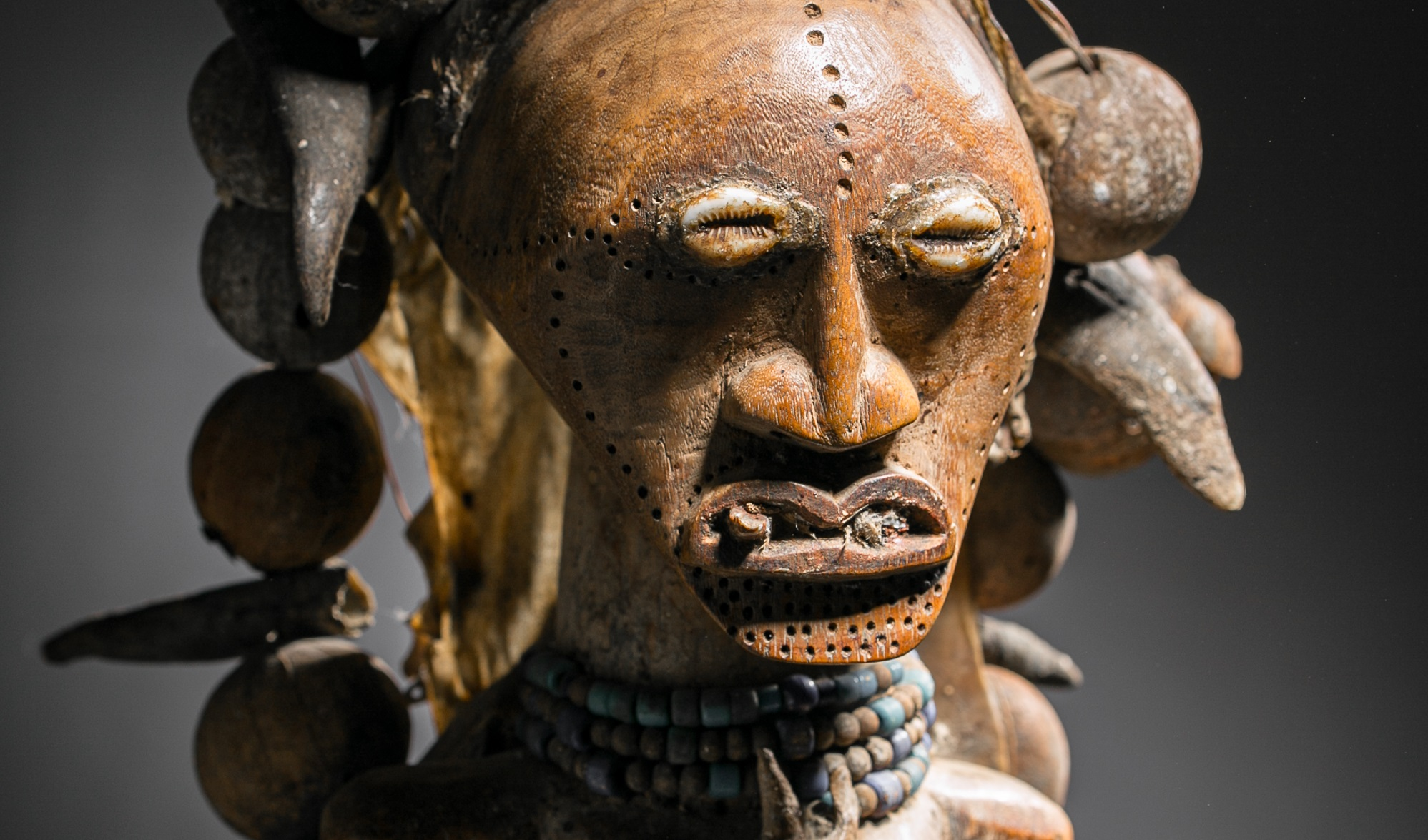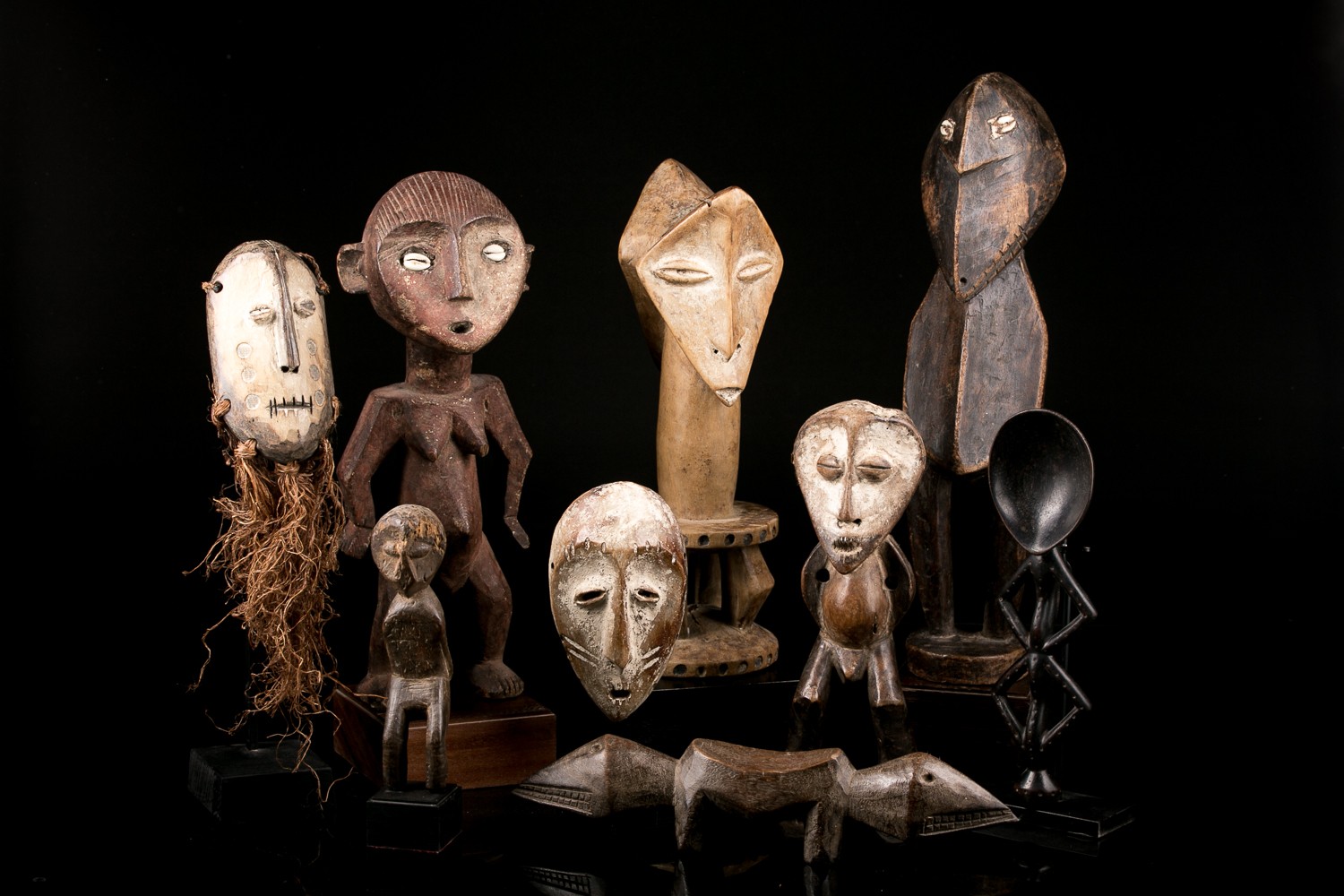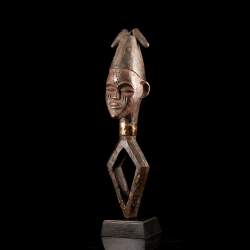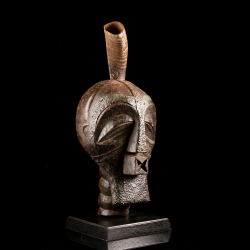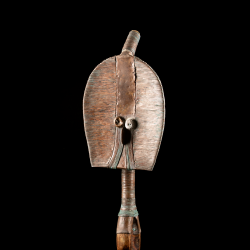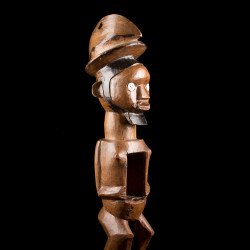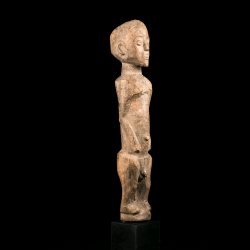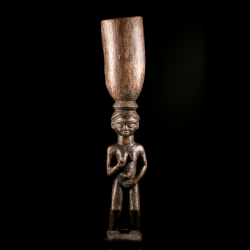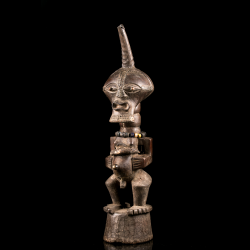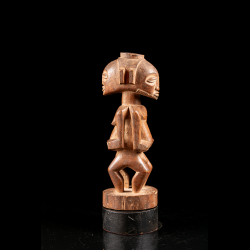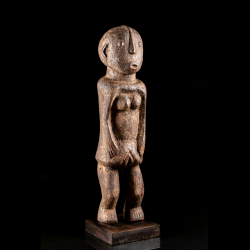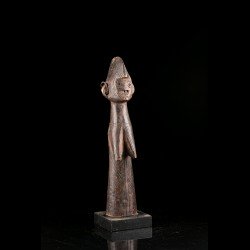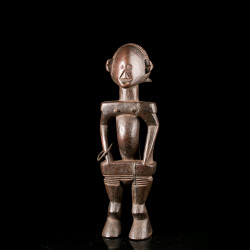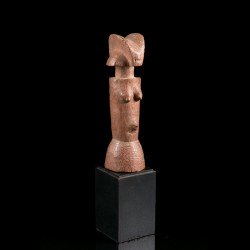Figures
La statue dans l'art africain traditionnelNotre galerie en ligne vous permet de découvrir et d'acheter de nombreuses statues d'art africain de différentes ethnies.Dans l'art africain, les statues, statuettes et figurines ont, tout comme les masques, des utilités diverses et spécifiques et sont constituées de bois, de bronze, de fer, d'os ou d'ivoire. Ainsi, certaines statues peuvent être des représentations d'ancêtres, d'autres seront destinées à accueillir les esprits de la brousse et les génies ; d'autres encore sont des portraits familiaux. D'autres encore telles que les maternités, doivent veiller à la fécondité de leur propriétaire, à l'instar des fétiches protecteurs individuels ou collectifs qui protègent leur propriétaire, leur famille ou leur village contre les mauvais esprits et les sorciers.Avec les masques, les statues constituent les objets les plus convoités du marché de l'art africain. Au travers du continent africain, leurs formes et styles varient fortement selon les conceptions artistiques des sculpteurs et leurs utilités. Aux représentations historiques et fidèles des statues et figures Bini Edo par exemple, on pourra opposer le style cubiste d'avant-garde des statues des Dogon. A l'opposé, on observera une attention portée à la finesse et aux détails chez les Baoulé en Côte d'Ivoire, comme chez les Luba au Congo.Notre galerie web d'art africain traditionnel propose un vaste choix de statues acquises auprès de collectionneurs ou récoltées directement en brousse par nos "runners" qui sillonnent les villages afin d'y dénicher la perle rare. Que vous soyez en France, en Belgique, en Suisse ou n'importe où ailleurs, n'hésitez pas à nous contacter ou à passer votre commande sur le site, nous expédions partout dans le monde.

